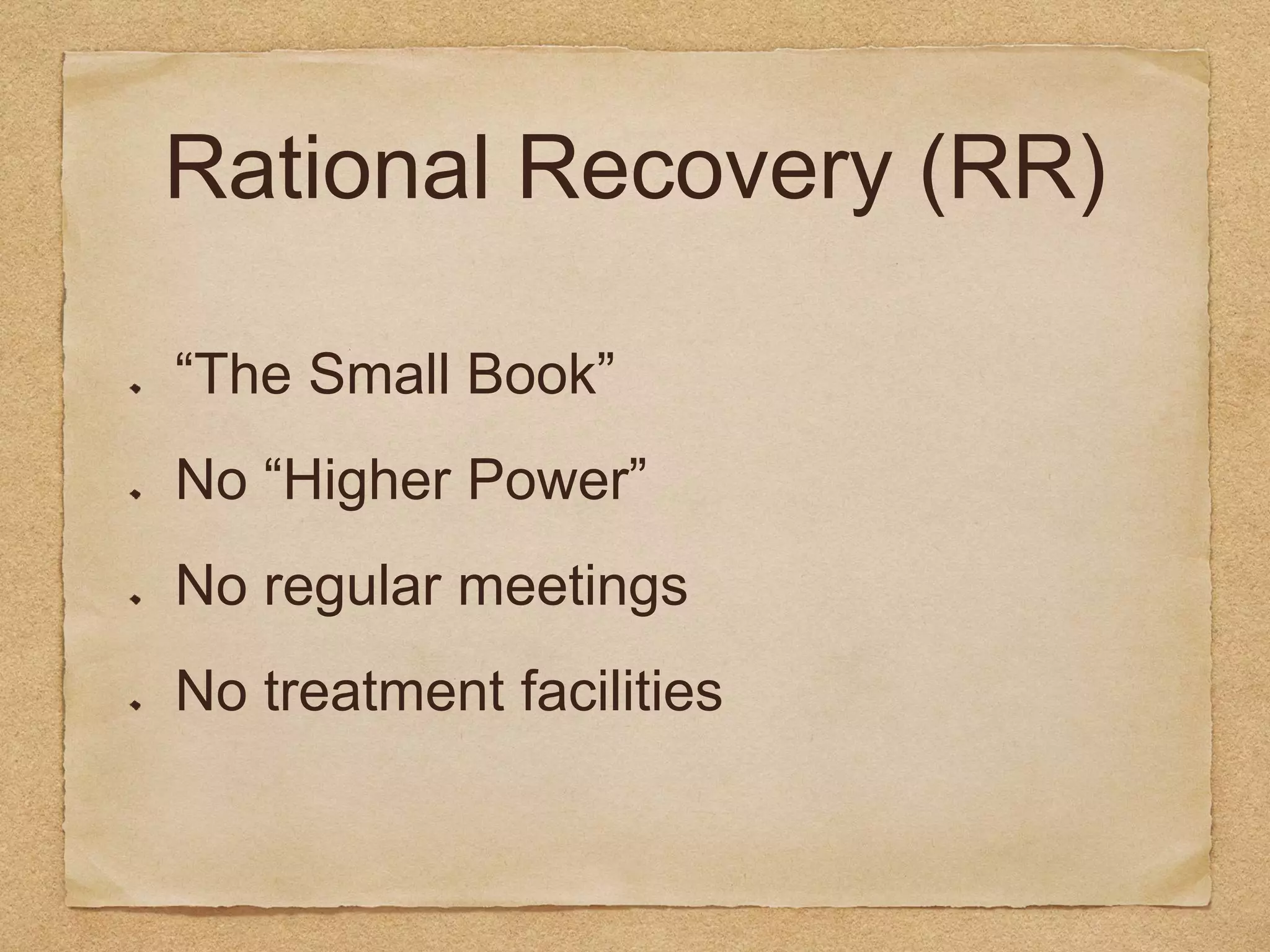Rational Recovery is an alternative treatment approach to 12-step programs like AA that uses cognitive techniques rather than relying on concepts like addiction as a disease or a higher power. The document summarizes Rational Recovery's key principles and techniques, including its use of Rational Emotive Therapy to help people recognize and dispute irrational beliefs that could lead to substance use. A study found that among people who had been attending Rational Recovery groups for 3+ months, 73% had abstained from substances in the last month, showing the program can successfully engage people and promote abstinence.



















